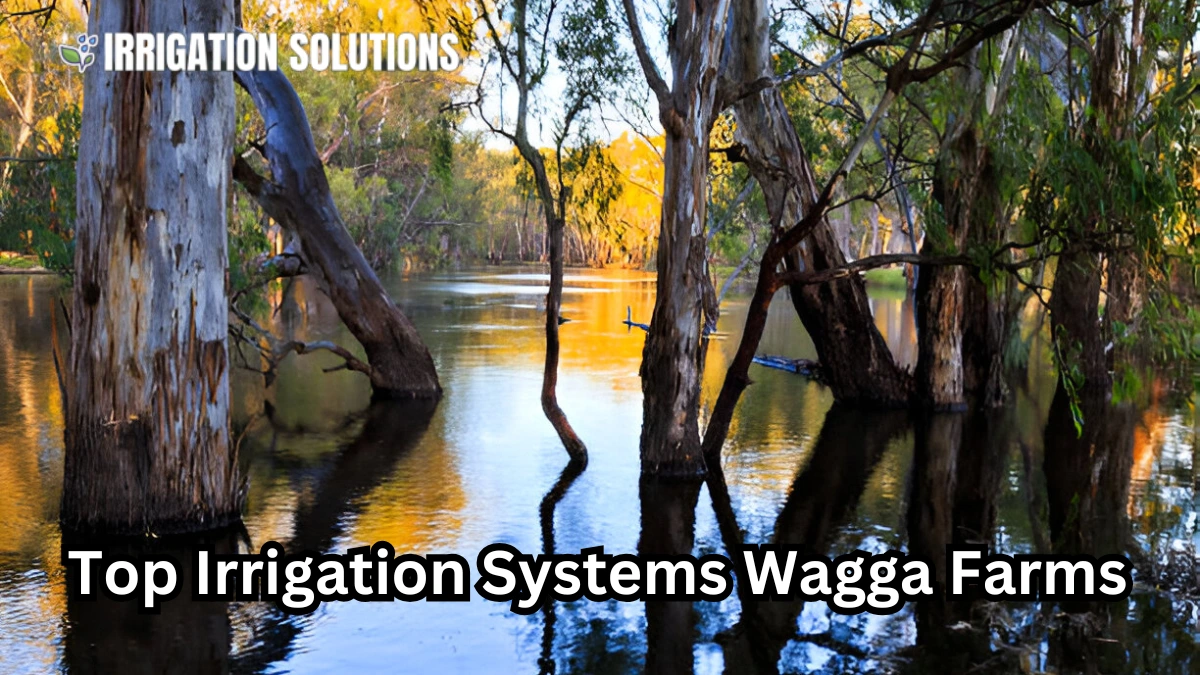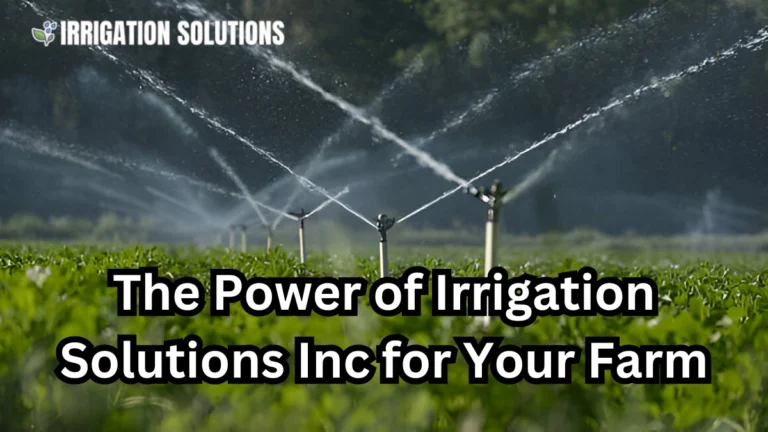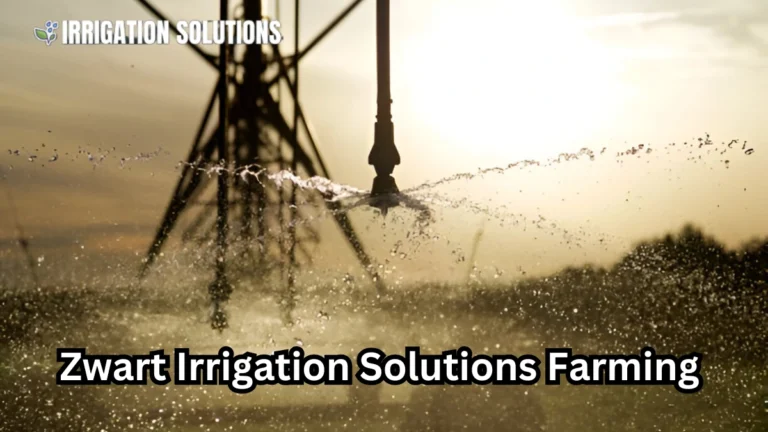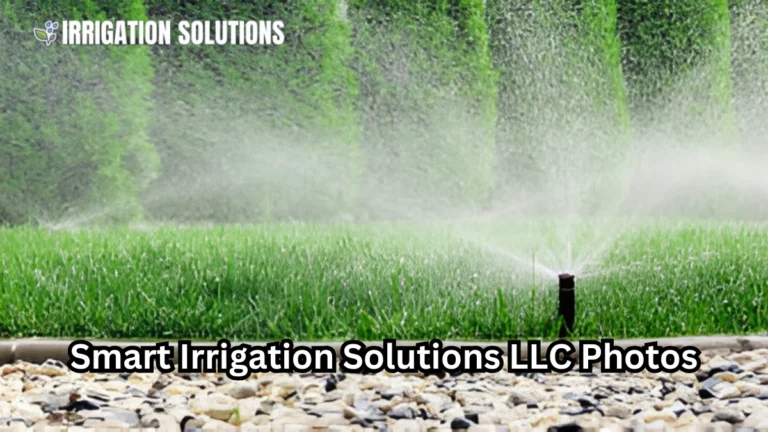Top irrigation systems wagga Farms

Irrigation systems play a crucial role in agriculture, particularly in areas like Wagga Wagga, a region that relies heavily on irrigation for crop production. Proper irrigation ensures that crops receive the right amount of water, boosts agricultural productivity, and conserves water, a precious resource. In this blog post, we’ll explore the different types of irrigation systems in Wagga Wagga, the challenges faced by farmers, the technologies available, and how efficient water management can lead to sustainable farming.
The Importance of Irrigation in Wagga Wagga
Wagga Wagga, located in the Riverina region of New South Wales, experiences a semi arid climate, which means rainfall can be unpredictable and insufficient for agricultural needs. This makes irrigation systems a vital part of farming in the area.
Key Benefits of Irrigation in Wagga Wagga:
- Enhanced Crop Yields: Proper irrigation helps maintain optimal soil moisture levels, allowing crops to thrive even during dry periods.
- Water Conservation: Advanced irrigation systems enable efficient water use, reducing waste and ensuring that water is delivered directly to the root zone where it’s most needed.
- Economic Viability: With reliable irrigation, farmers can grow a wider variety of crops, improving profitability and food security.
- Sustainability: Modern irrigation systems are designed to minimize environmental impact, using water resources more efficiently and promoting sustainable farming practices.
Types of Irrigation Systems in Wagga Wagga
Several irrigation systems are used in Wagga Wagga to suit different agricultural needs. Here’s a breakdown of the most common systems used in the region:
Drip Irrigation
Drip irrigation is one of the most efficient methods, delivering water directly to the root zone of plants through a network of tubes, pipes, and emitters. It minimizes water wastage by reducing evaporation and runoff.
Benefits of Drip Irrigation:
- Water Efficiency: Delivers water directly to the roots, ensuring minimal evaporation and runoff.
- Reduced Weed Growth: Since water is applied only to the plants, weeds around the plants do not receive water, limiting their growth.
- Precise Control: Allows farmers to control water delivery based on plant needs, resulting in healthier crops.
Sprinkler Irrigation
Sprinkler systems simulate rainfall by distributing water through a network of pipes and sprinklers. It’s an ideal solution for larger fields or areas with varied terrain.
Advantages of Sprinkler Irrigation:
- Versatility: Suitable for a wide range of crops and soil types.
- Wide Coverage: Can irrigate large areas quickly and evenly.
- Good for Lawns and Gardens: Often used in home gardens and landscapes in Wagga Wagga as well.
Flood Irrigation
Flood irrigation is one of the oldest methods, where water is applied to the entire field and allowed to flow freely, saturating the soil. While it’s less efficient than modern systems, it’s still used for certain types of crops in Wagga Wagga.
Pros of Flood Irrigation:
- Low Initial Cost: Simple setup and low cost compared to other systems.
- Ideal for Flat Lands: Works well for areas with large, flat fields.
Cons of Flood Irrigation:
- Water Wastage: Inefficient use of water, leading to significant water loss through evaporation and runoff.
- Labor-Intensive: Requires more labor to manage the flow of water and prevent flooding.
Centre Pivot Irrigation
Centre pivot irrigation involves a rotating arm with sprinklers that move in a circular pattern across the field. This method is highly effective for large, flat fields and is commonly used in Wagga Wagga.
Key Features of Centre Pivot Irrigation:
- Uniform Water Distribution: Ensures even water application, which is crucial for consistent crop growth.
- Low Labor Costs: Requires minimal human intervention once installed.
- Flexibility: Can be adjusted to accommodate different crop types and field shapes.
Subsurface Drip Irrigation (SDI)
Subsurface drip irrigation is a more advanced version of drip irrigation, where the drip tubes are buried below the soil surface. This method reduces evaporation and can improve water efficiency even further.
Advantages of SDI:
- Water Conservation: Minimizes water loss through evaporation.
- Reduced Disease Spread: Since the water is applied underground, the risk of foliar diseases is reduced.
- Efficient for Long-Term Use: Ideal for crops with deep root systems, such as orchards and vineyards.
Factors Influencing Irrigation Practices in Wagga Wagga
Effective irrigation practices in Wagga Wagga depend on several factors, including climate, soil type, water availability, and crop requirements. Farmers must consider these variables to choose the right irrigation system.
Climate and Weather Patterns
Wagga Wagga’s climate is characterized by hot summers and cold winters, with average rainfall around 500-600 mm annually. This means irrigation is essential during the dry months to ensure crops receive adequate moisture.
Soil Type and Fertility
The soil in Wagga Wagga varies from sandy loams to clay soils. Soil texture and drainage capacity impact how water moves through the soil, influencing the choice of irrigation system.
- Sandy Soils: These require more frequent irrigation but benefit from drip irrigation, which provides water directly to the root zone.
- Clay Soils: Retain water longer but may require less frequent irrigation. Sprinkler or surface irrigation systems can be more effective for clay rich soils.
Water Availability and Quality
Water availability is a critical factor in choosing an irrigation system. Wagga Wagga is located near the Murrumbidgee River, providing farmers with access to irrigation water. However, water quality and availability can fluctuate, so it’s essential to have efficient systems that can work with limited resources.
Challenges in Irrigation Management in Wagga Wagga
Despite the benefits, irrigation management in Wagga Wagga comes with several challenges. These challenges include water scarcity, soil salinity, and maintaining the infrastructure of irrigation systems.
Water Scarcity
As climate change continues to impact the region, water availability is becoming more unpredictable. Farmers in Wagga Wagga face the challenge of ensuring water efficiency while still meeting the needs of their crops.
Solutions:
- Efficient Systems: Implementing advanced irrigation technologies like drip and subsurface drip irrigation can help maximize water use.
- Rainwater Harvesting: Collecting and storing rainwater can supplement irrigation needs during dry periods.
Soil Salinity
In areas where water is heavily used for irrigation, there’s a risk of soil salinity buildup. Excessive irrigation, particularly with poor quality water, can lead to salt accumulation, which can damage crops.
Solutions:
- Salt-Tolerant Crops: Planting salt tolerant crops can help mitigate the effects of salinity.
- Leaching: Proper management techniques like leaching (flushing out salts from the soil) can prevent salinity buildup.
Irrigation System Maintenance
The infrastructure of irrigation systems can wear out over time, especially in areas with high usage. Maintenance costs can be significant, and failure to properly maintain systems can result in inefficient water use and crop loss.
Best Practices for System Maintenance:
- Regular Inspections: Ensuring all components of the system are working as they should.
- Cleaning Filters and Nozzles: Clogging is a common issue, particularly in drip systems.
- Monitoring System Efficiency: Using sensors and automation to monitor water distribution and ensure efficiency.
The Role of Technology in Modern Irrigation
Technology is transforming irrigation practices in Wagga Wagga. Smart irrigation systems, sensors, and automation are helping farmers optimize water use and improve crop yields.
Smart Irrigation Systems
Smart irrigation systems use weather data, soil moisture sensors, and other data inputs to automatically adjust water delivery. This ensures that crops receive the right amount of water at the right time, minimizing waste and improving efficiency.
Drones and Remote Sensing
Drones equipped with cameras and sensors are being used to monitor crops and irrigation systems. These technologies provide real-time data on soil moisture levels, crop health, and irrigation system performance.
Benefits of Drones in Irrigation:
- Accurate Data: Drones can capture detailed images of large areas, providing insights that help farmers make informed decisions.
- Timely Interventions: Identifying issues with irrigation systems early can save water and improve crop performance.
Automation and AI
AI-powered systems are becoming more common in agriculture. These systems can predict irrigation needs based on weather patterns, soil moisture, and crop requirements. Automation also reduces labor costs and ensures more precise water application.
Future Trends in Irrigation Systems for Wagga Wagga
As technology advances, irrigation systems will continue to evolve. The future of irrigation in Wagga Wagga will likely include the following trends:
- Increased Use of AI and Machine Learning: These technologies will optimize irrigation schedules and predict water needs based on real time data.
- Solar Powered Irrigation Systems: Solar energy can power irrigation systems, reducing the dependence on non-renewable energy sources.
- Integration of IoT Devices: The Internet of Things (IoT) will allow farmers to monitor and control their irrigation systems remotely, improving efficiency.
Conclusion
Irrigation systems are essential for agriculture in Wagga Wagga, helping farmers manage water resources efficiently while improving crop yields. From drip and sprinkler systems to cutting edge technologies like smart irrigation and drones, Wagga Wagga farmers have a variety of tools at their disposal to ensure sustainable farming practices. By adopting modern irrigation systems and embracing technological advancements, farmers can tackle challenges like water scarcity, soil salinity, and climate variability, securing the future of agriculture in the region.
Whether you’re a seasoned farmer or new to irrigation, investing in the right system is crucial for ensuring that your crops receive the optimal amount of water, ultimately contributing to long term agricultural success.






